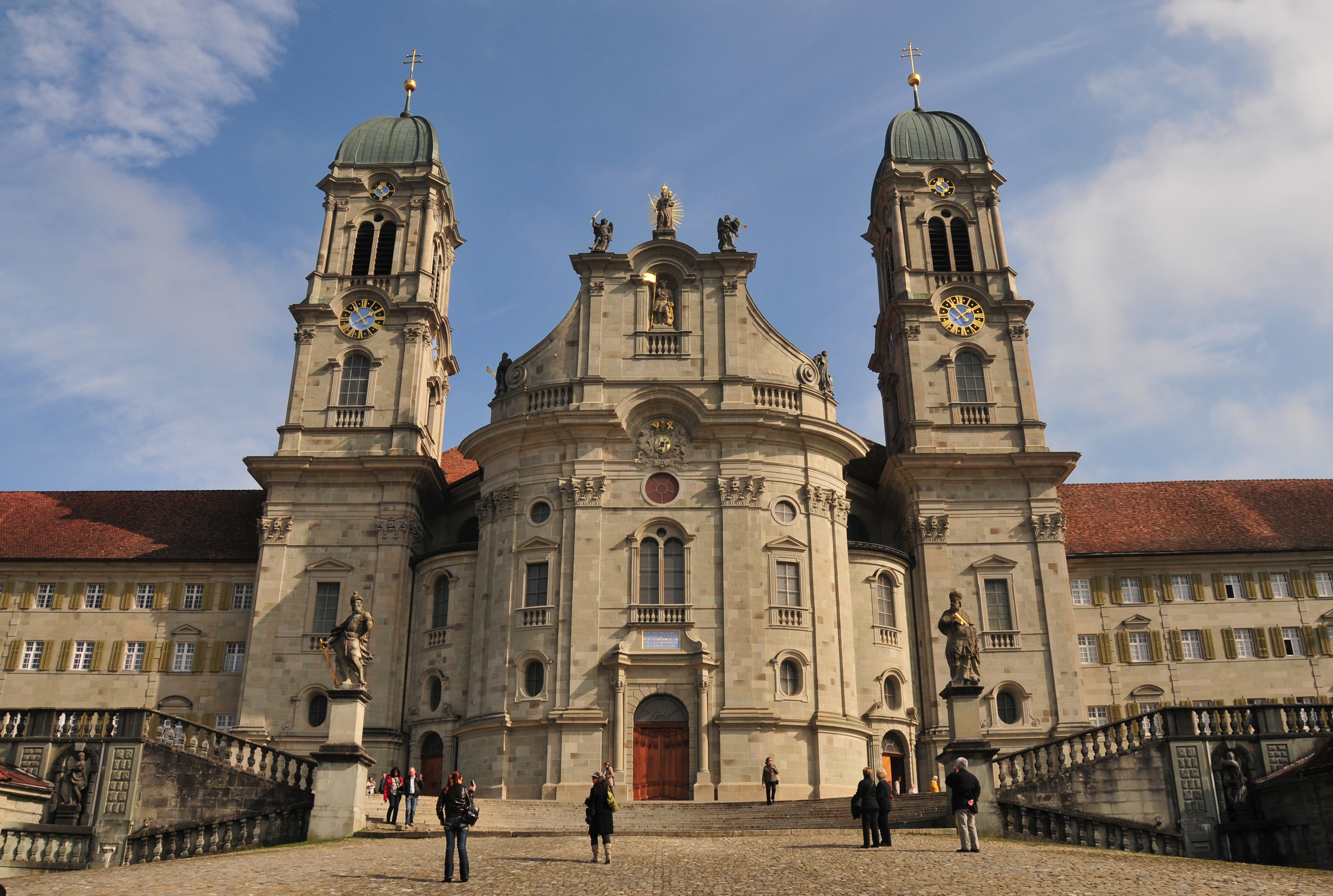|
Trachslau
Trachslau is a village inside the municipality of Einsiedeln, in the Swiss canton of Schwyz. The village is in the flow of the Alp river The Alp is a river in the Swiss canton of Schwyz and a tributary of the Sihl. It has a length of . The river rises on the northwestern flanks of the Brünnelistock and the northern flanks of the Kleiner and Grosser Mythen mountains near Brunni, a .... First documented in 1331 as Trechsellum. References Sources * Die Kunstdenkmäler des Kantons Schwyz, Band I: Die Bezirke Einsiedeln, Höfe und March. (= Kunstdenkmäler der Schweiz. Band 1). Hrsg. von der Gesellschaft für Schweizerische Kunstgeschichte GSK. Bern 1927. * Die Kunstdenkmäler des Kantons Schwitz. Neue Ausgabe III.II. Einsiedeln II. Dorf und Viertel Einsiedeln. Hrsg. von der Gesellschaft für Schweizerische Kunstgeschichte GSK. Bern 203, (Kunstdenkmäler der Schweiz Band 101). . Villages in the canton of Schwyz {{Schwyz-geo-stub ... [...More Info...] [...Related Items...] OR: [Wikipedia] [Google] [Baidu] |
Einsiedeln
Einsiedeln () is a municipality and district in the canton of Schwyz in Switzerland known for its monastery, the Benedictine Einsiedeln Abbey, established in the 10th century. History Early history There was no permanent settlement in the area prior to the early medieval period, but numerous artefacts left by prehistoric hunters, dated to the Mesolithic to Bronze Age were recovered. The original " hermitage" is associated with St. Meinrad, a Benedictine monk family of the Counts of Hohenzollern. According to legend, Meinrad lived on the slopes of Mt. Etzel from 835 until his death in 861. During the next eighty years Saint Meinrad's hermitage was never without one or more hermits emulating his example. One of the hermits, named Eberhard, previously Provost of Strasburg, erected a monastery and church there, of which he became first abbot. Work on the monastery is said to have begun in 934. [...More Info...] [...Related Items...] OR: [Wikipedia] [Google] [Baidu] |
Alp (river)
The Alp is a river in the Swiss canton of Schwyz and a tributary of the Sihl. It has a length of . The river rises on the northwestern flanks of the Brünnelistock and the northern flanks of the Kleiner and Grosser Mythen mountains near Brunni, and flows in generally northerly direction through the village of Alpthal Alpthal is a village and municipality in Schwyz District in the canton of Schwyz in Switzerland. Besides the village of Alpthal, the municipality includes the ski resort of Brunni, and settlement of Eigen. History Alpthal is first mentioned in 101 ..., the village of Trachslau, the town of Einsiedeln and the village of Biberbrugg. At Biberbrugg, the river Biber joins the Alp. Some north of Biberbrugg, at Dreiwässern the Alp flows into the Sihl. The valley between Brunni and Einsiedeln is called Alptal. External links * References Rivers of the canton of Schwyz Sihl Rivers of Switzerland {{Switzerland-river-stub ... [...More Info...] [...Related Items...] OR: [Wikipedia] [Google] [Baidu] |
Municipality
A municipality is usually a single administrative division having municipal corporation, corporate status and powers of self-government or jurisdiction as granted by national and regional laws to which it is subordinate. The term ''municipality'' may also mean the governing body of a given municipality. A municipality is a general-purpose administrative subdivision, as opposed to a special district (United States), special-purpose district. The term is derived from French language, French and Latin language, Latin . The English language, English word ''municipality'' derives from the Latin social contract (derived from a word meaning "duty holders"), referring to the Latin communities that supplied Rome with troops in exchange for their own incorporation into the Roman state (granting Roman citizenship to the inhabitants) while permitting the communities to retain their own local governments (a limited autonomy). A municipality can be any political jurisdiction (area), jurisd ... [...More Info...] [...Related Items...] OR: [Wikipedia] [Google] [Baidu] |
Canton (country Subdivision)
A canton is a type of administrative division of a country. In general, cantons are relatively small in terms of area and population when compared with other administrative divisions such as counties, departments, or provinces. Internationally, the most politically important cantons are the Swiss cantons. As the constituents of the Swiss Confederation, theoretically and historically, they are semi-sovereign states. The term is derived from the French word ''canton'', meaning "corner" or "district" (from which " cantonment" is also derived). In specific countries Cantons exist or previously existed in the following countries: * Cantons of Belgium * Cantonal Government of Bohol *Cantons of Bolivia *Cantons of Bosnia and Herzegovina: federal units of the Federation of Bosnia and Herzegovina *Canada: Canadian French equivalent for the English word " township", since the translation ''municipalité'' is already used for a different level of government (see township). ** Cantons o ... [...More Info...] [...Related Items...] OR: [Wikipedia] [Google] [Baidu] |
Canton Of Schwyz
The canton of Schwyz (german: Kanton Schwyz rm, Chantun Sviz; french: Canton de Schwytz; it, Canton Svitto) is a canton in central Switzerland between the Alps in the south, Lake Lucerne to the west and Lake Zürich in the north, centred on and named after the town of Schwyz. It is one of the founding cantons of Switzerland; Switzerland's name is derived from the name of the canton, and the flag of Switzerland from its coat of arms. For the history of the name, see Schwyz. The Swiss Federal Charter is on display in Schwyz. Northeast of the town of Schwyz is Einsiedeln Abbey. History Prehistory to the Roman era The earliest traces of humans in Schwyz are from the Upper Paleolithic and Early Mesolithic, or about 12,500 BC. An excavation of the karst caves in the valley of the Muota river (''Muotatal'') revealed numerous sites, some dating to the Younger Dryas period (c. 10,000 BC). The alpine meadows at Bödmeren, Twärenen and Silberen were Stone Age hunter-gather ... [...More Info...] [...Related Items...] OR: [Wikipedia] [Google] [Baidu] |

